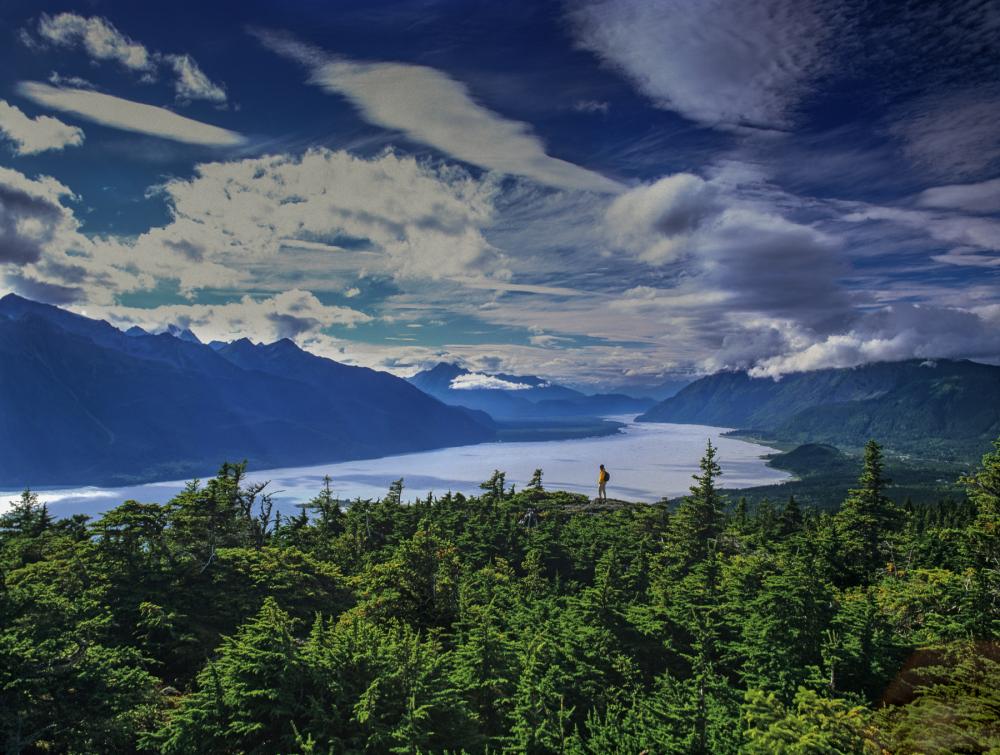Alaskan advisory committee recommends allowing increased development in the Tongass

Landscapes like Tongass National Forest can demonstrate locally-driven conservation
Howie Garber
The Roadless Rule protects the Tongass National Forest, so why is Alaska's governor messing with such a valuable place?
An Alaskan advisory committee recommended this week to sell-out one of America’s last remaining intact temperate rainforests.
The Tongass National Forest is the largest national forest in the United States. More than 9 million of those acres are protected from logging and other industrial development under a federal rule known as the Roadless Rule. Adopted in 2001 after the most extensive public involvement in the history of federal rulemaking, the Roadless Rule protected 58.5 million acres of national forest roadless areas from most road building and logging.
Now an advisory committee consisting mostly of pro-development appointees by Gov. Bill Walker has suggested to the U.S. Forest Service to allow a long list of Roadless Rule exemptions wide enough in scope to drive a logging truck through.
The U.S. Forest Service is evaluating whether Alaska should have its own Roadless Rule – one that suits the governor’s desires for increased logging, an industry that is no longer viable, especially without the help of hefty federal subsidies.
Meanwhile, in the continental United States, Utah Gov. Gary Herbert is also pushing to rollback protections on 4 million acres of the state’s roadless areas. The state of Utah’s flawed process to involve the public is neither sincere nor inclusive. The state is making arguments not grounded in science, and as a result, Gov. Herbert is putting at risk watersheds that provide drinking water to some of Utah’s largest communities.
Between Utah and Alaska, in jeopardy in the United States are public lands equivalent of the size of Yellowstone National Park, Yosemite National Park and Switzerland combined.
And worse yet, all of this is unnecessary. The Roadless Rule has protected the United States most valuable public lands for nearly two decades.
Maybe somewhat ironically, no one knows this better than the Alaskan advisory committee, which, in its report, outlines eloquently the unique and special characteristics of the Tongass National Forest. According to the report, they include:
- Cultural and spiritual significance for Alaska Native people
- Expansive areas of high-quality intact habitat that serve as biological strongholds and as a globally significant temperate rainforest ecosystem
- Opportunities for nature tours to view wildlife, hunt, fish, and hike
- Old growth forests that support subsistence hunting and gathering, sequester carbon, and provide “a globally significant reference landscape and intact old growth forest ecosystem”
- Salmon and trout fisheries that support jobs for thousands of local residents
- High-quality scenery with natural-appearing landscapes that support quality of life and recreation opportunities
- Watersheds that provide clean water to communities and fish
So, it’s unfathomable that the committee – under intense pressure from Alaska’s governor -- would recommend creating significant loopholes in the Roadless Rule, which will ultimately put all of those things at risk, and especially without any sound reason for doing so.
The Roadless Rule protects the magnificent natural landscapes and abundant fish and wildlife that are integral to Southeast Alaska’s unique culture and way of life. It protects the fisheries and tourism economies of the residents who live there. It’s obvious that changes to the roadless rule would cause harm to the very things that the committee outlines as important. No one wants that.
- Contact: Chelsi Moy, Communication Manager, Roadless Defense, The Wilderness Society, cmoy@tws.org
The Wilderness Society, founded in 1935, is the leading conservation organization working to protect wilderness and inspire Americans to care for our wild places. With more than one million members and supporters, The Wilderness Society has led the effort to permanently protect 109 million acres of wilderness and to ensure sound management of our shared national lands. www.wilderness.org
